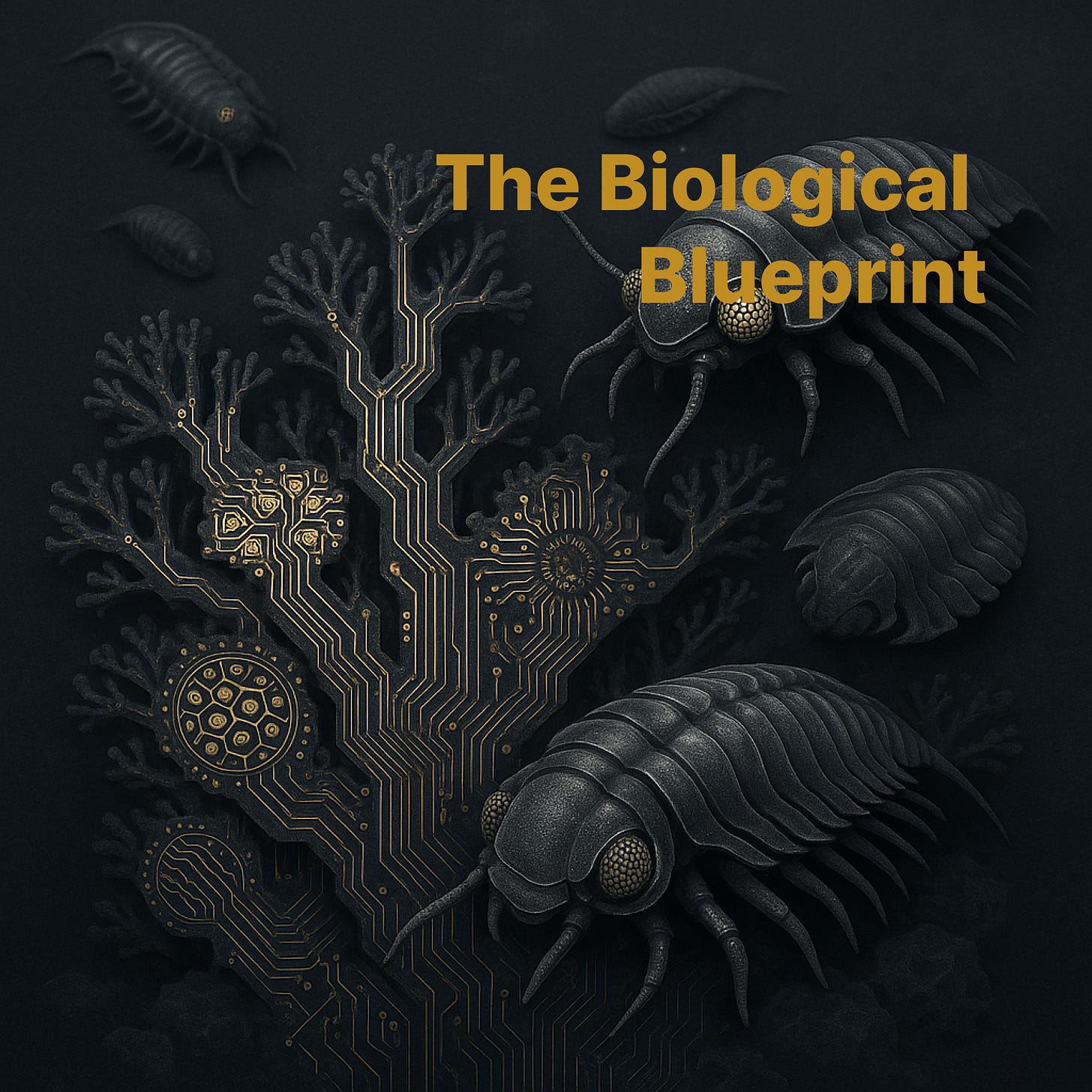I’m Derek Watson, and my head’s a whirlwind of ideas that won’t stop until they’re laid bare on the page. Here, I wrestle with every troubling question, radical insight and half-formed theory about AI’s seismic shift—because if I don’t write it down, I’ll explode. Consider this your front-row seat to a no-holds-barred exploration of AI’s Cambrian explosion: provocative, unfiltered and unapologetically bold. Buckle up and enjoy the ride.
🧬 To truly grasp the magnitude of what we are witnessing in artificial intelligence today, you must first understand the extraordinary biological precedent that occurred in Earth's ancient oceans. The Cambrian explosion was not merely an increase in the number of species—it was a fundamental reorganization of life itself, a creative burst so profound that it established the basic architectural patterns for all complex life that would follow.
🌱 Before the Cambrian period, life on Earth was remarkably simple. For over three billion years, the planet was dominated by single-celled organisms and basic multicellular forms. These early life forms were soft-bodied, lacking the complex structures and behaviors that characterize modern organisms. They drifted through the seas in relative simplicity, following basic chemical gradients and engaging in rudimentary survival behaviors.
💥 Then, approximately 540 million years ago, everything changed. In what paleontologists describe as the most dramatic diversification event in Earth's history, life exploded into an astonishing array of complex forms. Within the span of 25 million years—a geological instant—evolution produced creatures with hard shells, sophisticated sensory organs, complex nervous systems, and intricate behavioral patterns. The fossil record from this period reads like a catalog of biological innovation: trilobites with compound eyes containing thousands of lenses, anomalocarids with grasping appendages and sophisticated hunting strategies, and early vertebrates with the first primitive spinal cords.
👁️ The key innovation that triggered this explosion was vision. The development of light-sensitive organs, and eventually complex eyes, fundamentally altered the evolutionary landscape. For the first time in Earth's history, organisms could see their environment, detect predators and prey at a distance, and navigate complex three-dimensional spaces. This single innovation cascaded through the ecosystem, creating an arms race of sensory sophistication, defensive strategies, and predatory behaviors that drove the rapid diversification of life forms.
🧠 But vision was just the beginning. The Cambrian explosion also witnessed the emergence of the first nervous systems—primitive networks of neurons that could process sensory information, coordinate complex behaviors, and store simple memories. These early neural architectures laid the foundation for everything that would follow: the sophisticated brains of vertebrates, the distributed intelligence of cephalopods, and ultimately, the self-aware consciousness that would emerge in primates millions of years later.
🤖 The parallels to today's AI revolution are striking and profound. Just as the Cambrian explosion was triggered by the emergence of vision and nervous systems, our current AI Cambrian moment has been catalyzed by breakthrough innovations in perception and cognition. Modern AI systems have developed sophisticated "vision" through computer vision algorithms that can interpret images, videos, and visual data with superhuman accuracy. They have evolved "nervous systems" through neural networks that can process information, recognize patterns, and make decisions with increasing sophistication.
🌐 The environmental conditions that enabled the Cambrian explosion also find their modern equivalent in today's digital ecosystem. The ancient seas provided a rich chemical environment with abundant nutrients, stable temperatures, and diverse ecological niches. Today's AI systems thrive in an analogous environment of abundant computational resources, vast datasets, and diverse application domains. Just as the Cambrian seas were enriched by volcanic activity and changing ocean chemistry, our digital environment is continuously enriched by exponentially growing data generation, advancing semiconductor technology, and increasingly sophisticated algorithms.
⚔️ The evolutionary pressures that drove Cambrian diversification also have their modern counterparts. In the ancient seas, the development of predation created intense selection pressure for defensive innovations, sensory sophistication, and behavioral complexity. Today, economic competition creates analogous pressure for AI systems that can process information faster, make better decisions, and solve more complex problems. The companies and organizations that develop the most capable AI systems gain significant competitive advantages, driving a technological arms race that mirrors the biological arms race of the Cambrian period.
🚀 Perhaps most significantly, both the Cambrian explosion and today's AI revolution represent fundamental phase transitions in the organization of information processing. The Cambrian explosion marked the transition from simple chemical information processing to complex neural information processing. Today's AI revolution marks the transition from purely biological information processing to hybrid biological-digital information processing, and potentially to purely digital forms of cognition that may eventually surpass their biological origins.
Next Stop: Chapter 3 - The Numbers Don't Lie. See you there.
Thank you for reading. If you liked it, share it with your friends, colleagues and everyone interested in the startup Investor ecosystem.
If you've got suggestions, an article, research, your tech stack, or a job listing you want featured, just let me know! I'm keen to include it in the upcoming edition.
Please let me know what you think of it, love a feedback loop 🙏🏼
🛑 Get a different job.
Share below and follow me on LinkedIn or Twitter to never miss an update.


